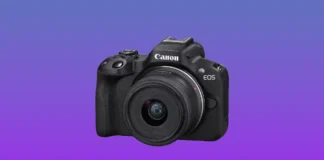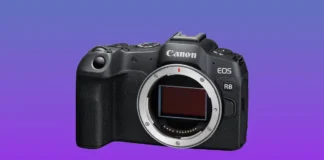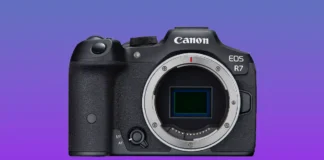So, you’re checking out the Nikon Z5 II, and a key question pops into your head: Does this camera come with IBIS? The short answer is yes—but there’s a lot more to it than that. If you’re serious about nailing tack-sharp shots or buttery-smooth handheld video, you’ll definitely want to know how well the in-body image stabilization holds up in real-world use.
Let’s break it all down and see why this feature alone might be the difference between average and incredible results.
Yup, It’s There: Nikon Z5 II Includes IBIS
Let’s cut right to the chase—yes, the Nikon Z5 II has IBIS (short for In-Body Image Stabilization). And not just any stabilizer—it’s rated up to 7.5 stops of compensation when used with compatible lenses. That means you can shoot handheld in dimly lit scenes, drop your shutter speed without fear, and even record video without the constant need for a gimbal.
When paired with Nikon’s native Z-mount lenses, the stabilization works seamlessly. And even if you’re using older F-mount lenses via an adapter, you’ll still benefit from sensor-based shake correction.
What Is IBIS and Why Should You Care?
Alright, maybe you’re new to the idea of IBIS. No worries. Imagine trying to take a photo of a friend at night without a tripod. You hold your breath, grip your camera tightly… and the shot still comes out blurry. That’s camera shake.
This is where IBIS (In-Body Image Stabilization) steps in. It works by physically shifting the sensor to counteract small movements of your hands. It’s like having a shock absorber built into the camera body. The result? Cleaner images, crisper handheld video, and more confidence when shooting without support gear.
It also plays a huge role when using prime lenses that don’t include optical image stabilization (OIS). With the Nikon Z5 II, even those lenses get stabilized—score!
How Good Is Nikon Z5 II’s IBIS?
On paper, 7.5 stops of compensation is excellent. In practice, it translates to:
- Handheld night shots without crazy ISO
- Smooth panning video, even when walking
- The ability to shoot at slower shutter speeds (like 1/4s) and still get sharp images
- Better results with non-stabilized lenses or vintage glass
That’s huge for travel photographers, low-light shooters, event photographers, and vloggers. Whether you’re framing up a moody cityscape or filming handheld B-roll, this feature gives you more creative freedom.
IBIS vs Lens Stabilization: Do You Still Need Both?
Let’s talk compatibility. Many modern lenses come with OIS (Optical Image Stabilization), which stabilizes the image using moving lens elements. So how does it work with in-body stabilization?
Here’s the good news: with the Z5 II, both systems work together.
When using Nikon’s Z-mount VR lenses, the lens and camera coordinate to provide dual stabilization—lens elements handle horizontal correction while the sensor manages vertical or rotational shake. This synergy gives you even better results, especially for long telephoto shots or handheld video.
If you’re using non-VR lenses, the camera’s IBIS still takes full control, which is perfect for adapting old favorites or manual focus lenses.
Who Actually Benefits From IBIS the Most?
Let’s get real—IBIS is a game-changer for certain shooters. Here’s who really wins with the Z5 II’s stabilization:
- Travelers and street photographers: Shoot on the go without a tripod.
- Low-light shooters: Capture clean shots without cranking ISO to noisy levels.
- Vloggers and video creators: Get steady handheld footage without carrying a gimbal.
- Event and wedding photographers: Snap sharp images during candle-lit ceremonies or dark receptions.
- Manual lens users: Stabilization finally available on legacy glass.
If you fall into any of those categories, the IBIS on the Nikon Z5 II is going to make your life easier and your results better.
Let’s Talk Specs: Nikon Z5 II At a Glance
Besides the excellent IBIS, the Z5 II packs serious heat under the hood. Here’s what you’re getting:
- 24.5MP full-frame CMOS sensor for beautiful image quality
- EXPEED 7 image processor delivering speed and clarity
- Dual UHS-II SD card slots for pro-level backup and overflow options
- AI-powered autofocus with subject tracking across nine types (humans, animals, vehicles, etc.)
- 3.69M-dot EVF with peak 3000-nit brightness—great for sunny outdoor shooting
- 4K UHD video at 30p full-width or 60p with a 1.5x crop
- 10-bit N-Log and N-Raw recording for cinematic workflows
- Fully weather-sealed body—ready for harsh conditions
That makes the Z5 II a seriously versatile tool for both stills and video, whether you’re shooting weddings or YouTube content.
But… What If You’re Coming from a DSLR?
If you’re switching from something like the Nikon D750 or a Canon Rebel series, you’re probably used to relying on lens-based stabilization. The Z5 II’s IBIS opens up entirely new possibilities.
You can now:
- Travel lighter—leave the tripod at home
- Shoot handheld indoors without boosting ISO
- Adapt vintage lenses and still get stabilized results
- Enjoy smooth, gimbal-free video
That’s not just an upgrade. It’s an unlock.
What About Budget Alternatives?
Not ready for full-frame yet? If IBIS is a must but your wallet’s yelling “nope,” Nikon’s crop-sensor models like the Z50 don’t have IBIS. For that reason alone, the Z5 II delivers more bang for the buck when it comes to stabilization.
On the other hand, if you’re willing to look outside Nikon, cameras like the Sony a7C II or Canon R6 also feature IBIS, but they usually come at a higher price point—or with trade-offs in other areas like battery life or card slot options.
Should You Even Care About IBIS?
Still wondering if IBIS really matters?
Here’s the deal: it’s not just a “nice-to-have” anymore. With today’s high-resolution sensors, even tiny shakes show up in your final image. And unless you shoot everything on a tripod, stabilization helps you make the most of that image quality.
Think of IBIS like noise-canceling headphones for your camera—it filters out distractions (in this case, hand shake) and lets your creative vision come through clearer and cleaner.
Final Verdict: Z5 II + IBIS = A Solid Combo
If you’re looking for a camera that can help you shoot confidently in a wider range of conditions, the Nikon Z5 II with in-body image stabilization is a seriously compelling option. The IBIS system gives you a solid edge, especially if you’re shooting handheld, adapting vintage lenses, or filming video.
So if you’re thinking about making the leap—this might be the moment. Because when your gear works with you instead of against you, that’s when the real magic happens.











